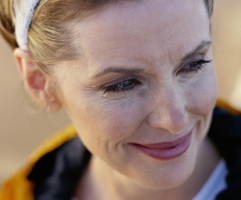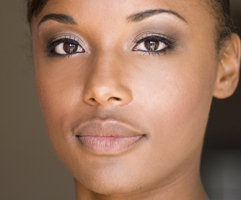



Acne Treatment
 Acne
Acne
No matter your age, acne can be deeply distressing. It can seem like it takes forever to go away, as lesions heal slowly and new ones keep appearing. Hormones are a key cause of acne, which is why the condition is so common in teenagers. Boys are most likely to suffer scarring from acne, while girls are more likely to get acne as adults. However, people of both genders and all ages can get acne. Some adult women experience mild to moderate acne due to hormonal changes associated with pregnancy, their menstrual cycles, or starting or stopping birth control pills.
The good news is, excellent acne treatments are available and they are available here at Long Ridge Dermatology. Our doctors will discuss your treatment options and help you decide which is best for you.
What Is Acne?
The medical term for “pimple” is “comedo.” This is a plug of fat, skin debris and keratin (the stuff nails, hair, and skin are made of) that clogs a hair duct in your skin. There are two ways that this can appear: open comedos are called blackheads, while those that have closed up are known as whiteheads. Whiteheads can cause the walls of the hair duct to rupture. This leads to redness, infection, and the papules, pustules, nodules and cysts of acne.
How Is Acne Treated?
Acne treatments work by reducing oil production, speeding up skin cell turnover, fighting bacterial infection, reducing the inflammation or doing all four. With most prescription acne treatments, you may not see results for four to eight weeks, and your skin may get worse before it gets better.
You may be given a prescription medication to apply to your skin (topical medication) or take by mouth (oral medication). Oral prescription medications for acne should not be used during pregnancy, especially during the first trimester.
Types of acne treatments include:
- Clinical Drug Trials. Our office conducts pre-market clinically approved FDA drug studies in cooperation with national pharmaceutical companies. You may qualify for enrollment and could receive free medication; free medical office visits and often receive a cash stipend for completing the study. You must meet specific requirements to enroll and these vary study to study. Details are available from our medical providers or our staffs study coordinator.
- Topical treatments. Acne lotions may dry up the oil, kill bacteria and promote sloughing of dead skin cells. Over-the-counter lotions are generally mild and contain benzoyl peroxide, sulfur, resorcinol, salicylic acid or lactic acid as their active ingredient. These products can be helpful for very mild acne. More severe cases may require a stronger prescription lotion, such as Tretinoin (Avita, Retin-A, Renova) and adapalene (Differin), derived from vitamin A. They work by promoting cell turnover and prevent plugging of the hair follicles. A number of topical antibiotics also are available. They work by killing excess skin bacteria. Often, a combination of such products is required to achieve optimal results.
- Antibiotics. Prescription oral antibiotics may be needed to reduce bacteria and fight inflammation for more severe cases of acne. You may need to take these antibiotics for months, and you may need to use them in combination with topical products.
- Isotretinoin. For deep cysts, antibiotics may not be enough. Isotretinoin (Accutane) is a powerful medication available for scarring cystic acne or acne that doesn’t respond to other treatments. This medicine is reserved for the most severe forms of acne. It’s very effective, but people who take it need close medical monitoring by a dermatologist because of the possibility of severe side effects. Isotretinoin is associated with severe birth defects, so it can’t be taken by pregnant women or women who may become pregnant during the course of treatment or within several weeks of concluding treatment. In fact, the drug carries such serious potential side effects that women of reproductive age must participate in a Food and Drug Administration-approved monitoring program to receive a prescription for the drug. In addition, isotretinoin may increase the levels of triglycerides and cholesterol in the blood and may increase liver enzyme levels.
- Oral contraceptives. Oral contraceptives, including a combination of norgestimate and ethinyl estradiol (Ortho-Cyclen, Ortho Tri-Cyclen), have been shown to improve acne in women. However, oral contraceptives may cause other side effects that you’ll want to discuss with your doctor.
- Laser and light therapy. Laser- and light-based therapies reach the deeper layers of skin without harming the skin’s surface. Laser treatment is thought to damage the oil (sebaceous) glands, causing them to produce less oil. Light therapy targets the bacterium that causes acne inflammation. These therapies can also improve skin texture and lessen the appearance of scars, so they may be good treatment choices for people with both active acne and acne scars.
- Cosmetic procedures. Chemical peels and microdermabrasion may be helpful in controlling acne. These cosmetic procedures — which have traditionally been used to lessen the appearance of fine lines, sun damage and minor facial scars — are most effective when used in combination with other acne treatments.
Acne scar treatment
There are several effective options for smoothing acne-related scarring, including dermal fillers, dermabrasion, intense light therapy and laser resurfacing.
- Dermal fillers. Collagen or fat can be injected under the skin and into scars to fill out or stretch the skin, making the scars less noticeable. Results from this acne scar treatment are temporary, so you’d need to repeat the injections periodically.
- Dermabrasion. Usually reserved for more severe scarring, dermabrasion involves removing the top layer of skin with a rapidly rotating wire brush. Surface scars may be completely removed and deeper acne scars may appear less noticeable. Dermabrasion may cause pigmentation changes for people with darker skin.
- Microdermabrasion. This newer acne scar treatment involves a hand-held device that blows crystals onto skin. These crystals gently abrade or “polish” the skin’s surface. Then, a vacuum tube removes the crystals and skin cells. Because just the surface cells are removed, the skin isn’t damaged. However, results are subtle and scars may still be noticeable, even after several sessions.
- Laser, light source and radiofrequency treatments. In laser resurfacing, a laser beam destroys the outer layer of skin (epidermis) and heats the underlying skin (dermis). As the wound heals, new skin forms. Less intense lasers (nonablative lasers), pulsed light sources and radiofrequency devices don’t injure the epidermis. These treatments heat the dermis and cause new skin formation. After several treatments, acne scars may appear less noticeable. This means shorter recovery times, but treatment typically needs to be repeated more often and results are subtle.
- Skin surgery. A minor procedure (punch excision) cuts out individual acne scars. Stitches or a skin graft repairs the hole left at the scar site.
What Causes Acne?
Whether in teens or adults, most acne has roots in hormonal changes. The hair follicles, or pores, in your skin contain sebaceous glands (also called oil glands) which produce sebum, an oil that lubricates your hair and skin. As the body begins to mature in adolescence, hormones stimulate the sebaceous glands to make more sebum, and the glands may become overactive. Pores become clogged if there is too much sebum and too many dead skin cells. Bacteria can then get trapped inside the pores and multiply … causing acne.
What Can I Do About Acne?
To help prevent the oil buildup that can contribute to acne, wash your face twice a day with a mild soap and warm water. Do not scrub hard with a washcloth — this can make matters worse by irritating the skin and pores. Be as gentle as you can.
If you wear makeup or sunscreen, make sure it’s labeled “oil free,” “noncomedogenic,” or “nonacnegenic.” This means it won’t clog your pores and contribute to acne. And when you are washing your face, be sure you take the time to remove all of your makeup so it doesn’t clog your pores.

